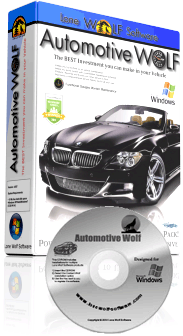|
Windows XP/7/8/10/11
|
 |
 No Risk 30 Day Free Trial |
HOME | INTRO | FEATURES | DOWNLOAD | PURCHASE | SCREEN SHOTS | REVIEWS | CAR CARE TIPS |
| Car Care Tips - Cooling System Maintenance |
| Never open the radiator of a car that has
just been running. The cooling system of a car is under high
pressure with fluid that is usually hotter than boiling water. Look
for the cooling system reserve tank, somewhere near the radiator. It
is usually translucent white so you can see the fluid level without
opening it. (Do not confuse it with the windshield washer tank). The
reserve tank will have two marks on the side of it. FULL HOT and
FULL COLD. If the level frequently goes below full cold after adding
fluid, you probably have a leak which should be checked as soon as
possible. Today's engines are much more susceptible to damage from
overheating, so do not neglect this important system. Flush your cooling system once a year. The best time is at the beginning of the summer or the beginning of the winter. A good technician will flush the engine block and heater core. He will clean out the overflow bottle and test the radiator cap. He will fill the cooling system with a 50/50 mixture of coolant. He will pressure test the system at a few pounds over the normal operating pressure. If after a short time there is no pressure loss indicating a coolant leak and none of the hoses blow or swell up, then all is OK. Remember that antifreeze needs water to work. You should never use a mixture of more than 60% coolant or antifreeze. It's the anti foaming agents, the rust inhibitors, and the water pump lubricants that wear out. With the price of plastic tank radiators approaching $400 and damage related to the deterioration of aluminum timing covers costing $600 to $1,000 to repair, why not spend between $50 and $85 for a yearly flush? Do you want to know how your cooling system works? Read on. The coolant and water mix is pumped through the engine by the water pump. The job of the liquid is to pick up the heat and carry it to the radiator so it can be dissipated. The water pump can't pump foam, so they put anti-foaming agents in the coolant. We know that every car that overheats, does so because of the lack of coolant (because of a leak) or because of a restriction of the flow (closed thermostat, plugged radiator, or a water pump that's not pumping because of a drive belt that broke or an impeller that's come loose). The thermostat's job is to open when the coolant gets too hot and let the coolant travel faster into the radiator. If it senses the coolant is too cold, it closes to slow down the flow and keep the coolant in the engine longer. We all know that water boils at 212 degrees Fahrenheit. For every pound of pressure you put water under, it will raise the boiling point approximately 2 degrees. So a good 15 pound radiator cap will raise the water's boiling point 30 degrees from 212 to 242 degrees Fahrenheit. Add 50 % of coolant and the boiling point of the mixture is well over 260 degrees Fahrenheit. We know that steam can't be pumped by the water pump, that's why we need the coolant to stay in a liquid form. It's important to know we want today's cars to operate at 220 degrees Fahrenheit . So if the coolant turns to steam too early because of a bad radiator cap or a weak mix of coolant and water, the car will overheat at 230 degrees or so, which leaves little room for an extended stop at a traffic light on a hot summer day. Very few overheated cars are fixed with just a radiator cap and I've never seen a car fixed with a flush. Flushing a car to fix an overheat is like rinsing out your mouth with mouthwash to kill cavities. A flush is done after the repair, not as the repair.
Proper maintenance of your car's cooling
system is crucial to ensure the engine remains at an optimal
temperature and to prevent overheating. Here are some key
maintenance steps you can take:
|
Easily Track and Manage Maintenance Schedules for any type of Vehicle by Time, Distance or Hours
30 Day FREE Trial
HOME | INTRO | FEATURES | DOWNLOAD | PURCHASE | SCREEN SHOTS | REVIEWS | Videos | FAQ | EULA | CONTACT US | CAR CARE TIPS |
Copyrightę Lone Wolf Software - www.lonewolf-software.com
Automotive Wolf Car Maintenance Software can also be found at :
Car Care | Contact Management | Home Inventory & Management | Backup | Text & Document Organization | Web Site Monitoring | ToDo Lists



